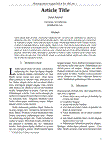| Summary: | The purpose of this presentation is to review recent literature on carotenoid pigmentation insalmonid fishes. Consumers have preferences for red-colored products of salmonid fishes, and this is reflectedby an increased rate of publications on carotenoids in relation to aspects of quality such as coloration,variation among groups of fish and within fish, and effects of fish production and processing. Recent studieshave shown that dietary carotenoid utilization for muscle pigmentation has a considerable genetic component,enabling selective breeding for color traits. Recently, studies have shown that astaxanthin (3,3´-dihydroxy-â,â-carotene-4,4´-dione) E/Z isomers accumulate selectively in fish tissues and plasma. All-E-astaxanthinaccumulate selectively in muscle and plasma, and 13Z-astaxanthin in liver of salmonid fishes. The positiveeffect of lipid content on muscle carotenoid deposition appear to be the only interaction with macronutrients.Also it has been shown that oil composition and á-tocopherol may have slight positive effects on carotenoidutilization. Storage losses of carotenoids may be considerable, and protection from oxygene is of greatimportance. Carotenoid absorption is slow, and apparently governed by passive diffusion. About 60% of theabsorbed carotenoids are metabolized, partly into idoxanthin (3,3´,4´-trihydroxy- â, â -carotene-4-one) whichis rapidly formed from astaxanthin. Carotenoid metabolism and partitioning among body compartments isaffected by sex hormones. Positive effects of astaxanthin on on growth and disease resistance may be related tocarotenoid antioxidant activity.
|
|---|
